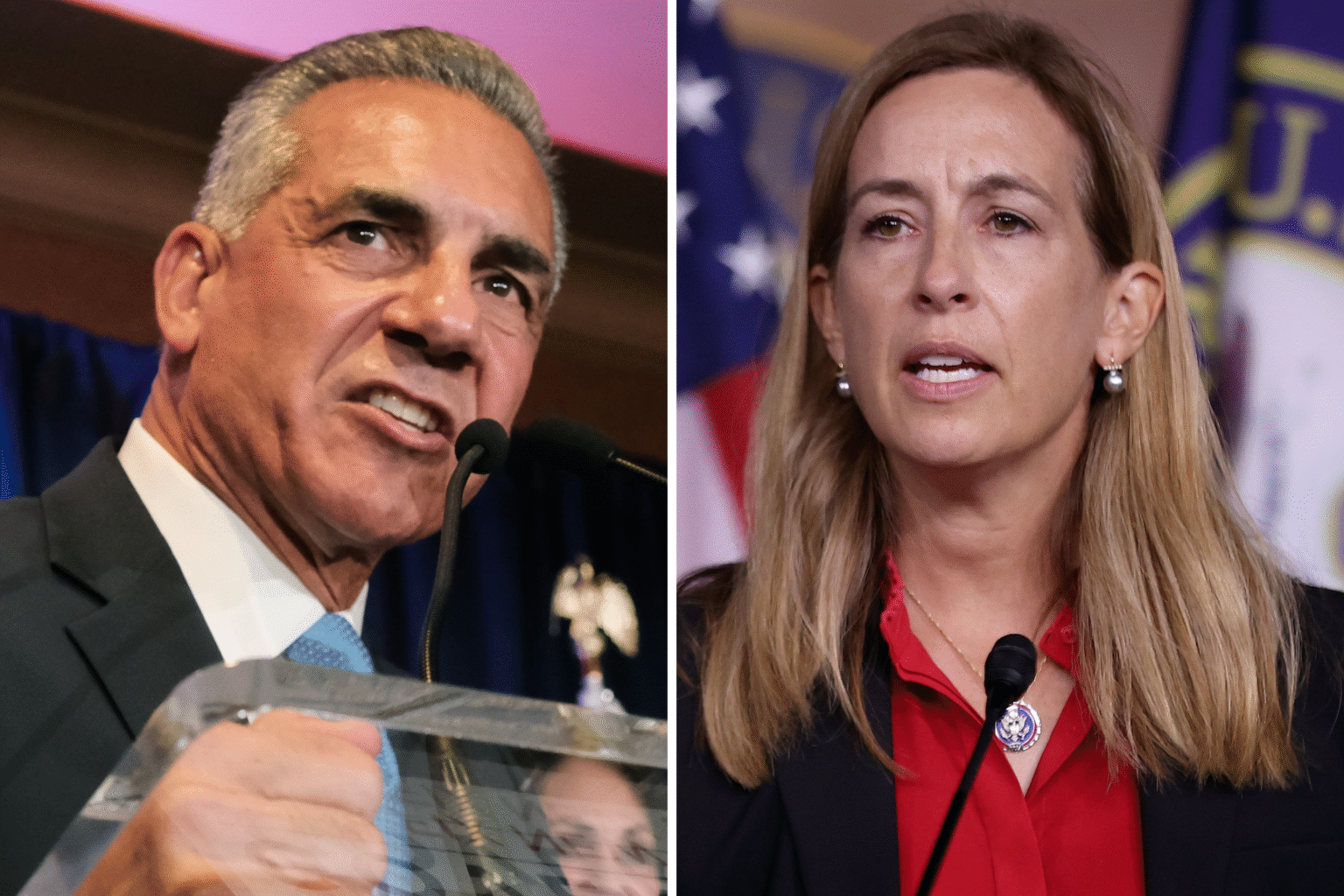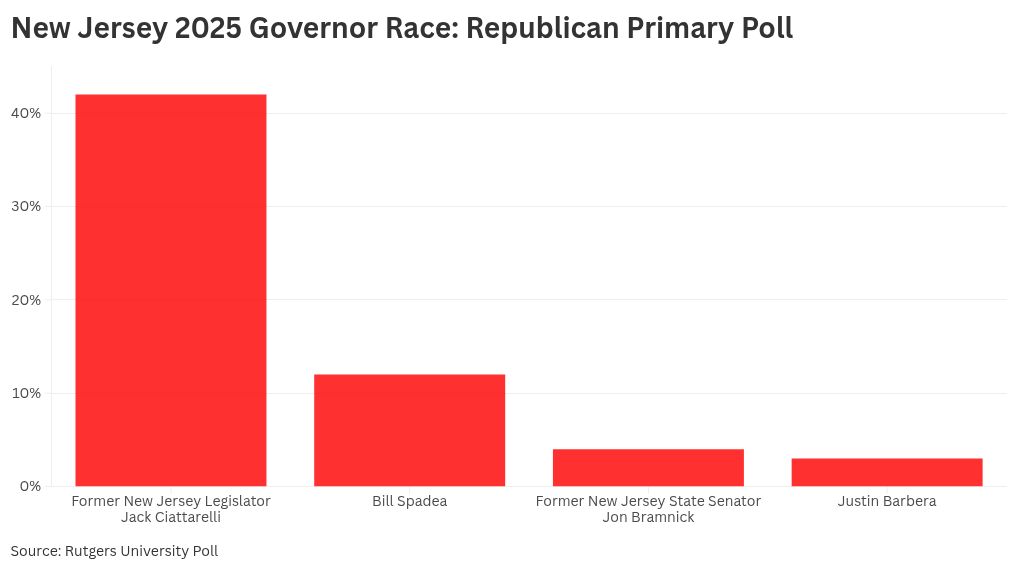New Jersey voters are four weeks away from making their pick in the state’s gubernatorial primary election on June 10, 2025. Polls suggest that while one Republican candidate may have a lead, Democrats appear more divided about who they are supporting.
Newsweek reached out to each campaign for comment.
Why It Matters
New Jersey’s governor race in November will be important for both major political parties. For Republicans, the race will be an early test of President Donald Trump’s popularity ahead of the 2026 midterms, when they could find themselves on defense in key Congressional elections.
For Democrats, the race may reveal whether they are winning back key voter groups that shifted toward Republicans in the 2024 election. Trump made inroads with young voters and Hispanic voters, culminating in a rightward shift in the Garden State. Former Vice President Kamala Harris won the state by fewer than 6 percentage points, compared to former President Joe Biden’s nearly 16 point victory there four years earlier.
What To Know
On the Democratic side, Representative Mikie Sherrill has held the lead in polls, but it is narrow in a race with a large number of undecided voters as other candidates move in hopes of breaking through in the final stretch of the campaign.
The latest independent poll of the race, conducted by Rutgers University, found that 17 percent of voters were leaning toward Sherrill. Jersey City Mayor Steven Fulop placed second, with 12 percent, while former Montclair Mayor and President of the New Jersey Education Association Sean Spiller placed third with 10 percent.
Newark Mayor Ras Baraka, who last week was arrested by Immigration and Customs Enforcement (ICE) for allegedly trespassing at a detention center, and Representative Josh Gottheimer each had the backing of 9 percent of respondents. Former New Jersey Senate President Steve Sweeney had the support of 7 percent. Thirty-two percent of respondents said they were unsure who they planned to cast their ballot for.
The poll surveyed 966 registered from April 1 to April 10, 2025, and had a margin of error of plus or minus 4.3 percentage points.
The New Jersey Globe on Tuesday reported that a Baraka internal poll showed him trailing Sherrill by 4 points. While 20.7 percent said they were leaning toward Sherrill, 16.5 percent were supporting Baraka and 12.9 percent planned to back Fulop. That MDW Communications poll surveyed 1,100 New Jersey residents from May 11 to May 13. It had a margin of error of plus or minus 3.5 percentage points.
When reached by Newsweek, Gottheimer’s campaign pointed to an internal poll that showed him as the second-highest candidate, following Sherrill’s 19 percent support with 15 percent support. The Global Strategy Group poll surveyed 900 likely voters from April 1 to April 3 and had a margin of error of plus or minus 3 percentage points.
On the Republican side, former State Representative Jack Ciattarelli has carved out a lead. The Rutgers poll showed him leading other Republicans with 42 percent of the vote, while conservative talk radio host Bill Spadea placed second with 12 percent.
An Emerson College poll, which surveyed 334 Republicans from January 18 to January 21, 2025, showed 26 percent of Republicans leaning toward Ciattarelli and 13 percent planning to back Spadea. It had a margin of error of plus or minus 5.3 percentage points.
Ciattarelli was the party’s gubernatorial nominee in 2021, when he lost by about three points to Democratic Governor Phil Murphy. Trump endorsed Ciattarelli’s campaign on Monday, writing in a Truth Social post he is “the Republican Candidate who is best positioned to STAND TALL against the Radical Left Democrats and, most importantly, ensure a Big Victory in this Very Important Gubernatorial Election.”
What People Are Saying
Sweeney’s Press Secretary Kerry Lyons told Newsweek: “No candidate in this race understands New Jersey like Steve Sweeney, and he is putting forward plans that address the issues that matter most to seniors, working- and middle-class New Jerseyan families, and students and educators. Steve is well positioned to win, and the polls aren’t capturing what we are seeing on the ground. We have a robust VBM operation, we’re working closely with our labor partners to organize, and Steve is meeting voters all across the state every single day — and he’s not taking a single voter for granted.”
Ashley Koning, director of the Rutgers poll, wrote in a press release: “All of the candidates have made some progress since the fall in terms of voters knowing who they are, but they haven’t made noticeable gains in favorability. Though not necessarily unusual at this stage in the game, candidates on both sides of the aisle still lack name recognition from a notable number of voters, and no candidate on either side of the aisle is viewed favorably by more than one in five voters.”
Fulop wrote in a Facebook post in April: “Some advice – disregard internal polls (including mine) as there always is a discussion and an agenda when released (that’s the truth). Here is what is 100% also true – per below this campaign will change meaningfully in the next 8 weeks ways that nobody can predict. It is tight.”
What Happens Next
After the June 10 primary, voters will head to the polls for the general election on November 4, 2025. The Cook Political Report currently classifies the race as leaning Democrat, meaning it is “considered competitive” but Democrats have an “advantage.”
Read the full article here


